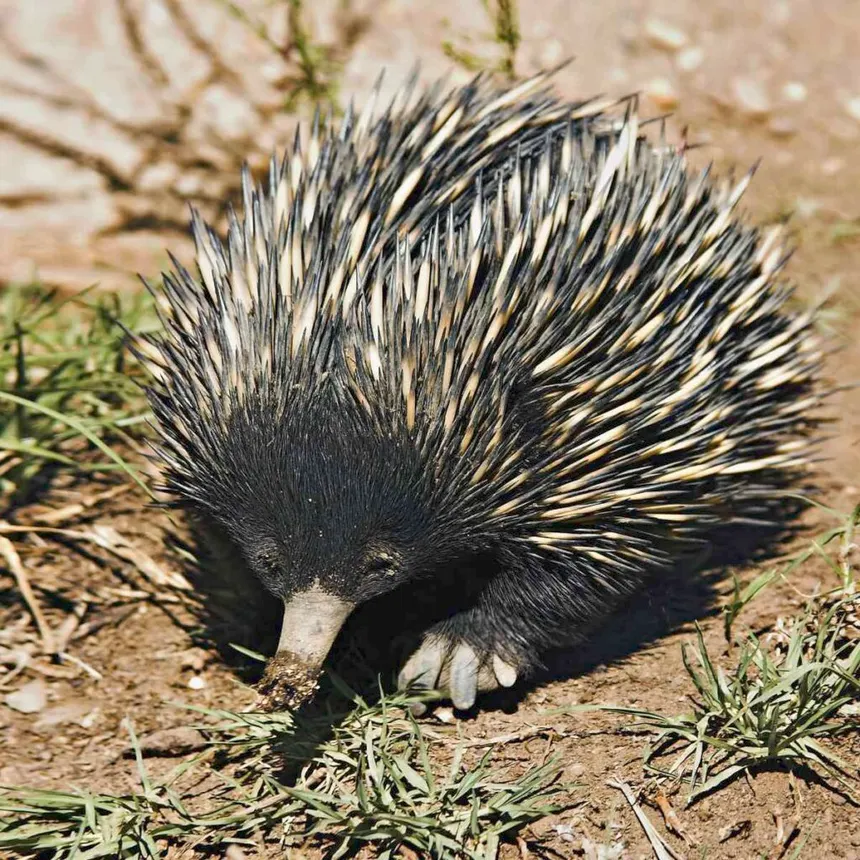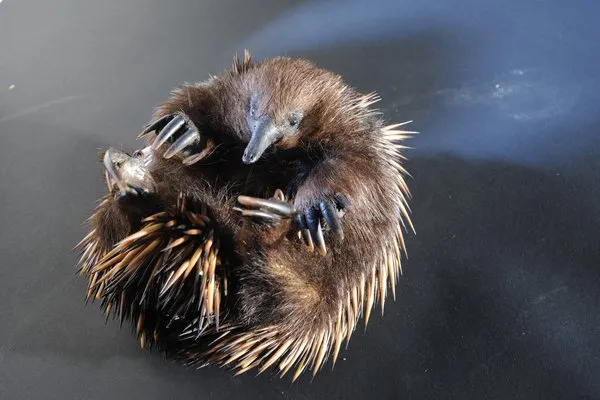“7 Fascinating Facts About Echidnas: Australia’s Spiky Enigma”

The echidna, also known as the spiny anteater, is one of nature’s most unusual mammals. Found mainly in Australia and New Guinea, echidnas are covered in sharp spines, lay eggs like a reptile, and have no teeth—but they’re mammals! These ancient creatures are part of a rare order called monotremes, and their evolutionary uniqueness makes them a subject of great fascination. Let’s dive into 7 curious and intriguing facts about echidnas that reveal why they’re so remarkable.
1. They Lay Eggs—But They’re Mammals
Echidnas are one of only two mammals on Earth that lay eggs—the other being the platypus. After mating, the female echidna lays a single leathery egg into her pouch, where it incubates for about 10 days. When it hatches, a jellybean-sized baby (called a puggle) stays in the pouch for weeks while feeding on milk.
2. Ancient and Evolutionarily Unique
Echidnas belong to a primitive group of mammals known as monotremes, which split from the mammalian evolutionary tree over 200 million years ago. Their reptile-like features, such as egg-laying and a cloaca (a single opening for reproduction and waste), offer clues to mammalian evolution.

3. No Teeth, No Problem
Echidnas don’t have teeth. Instead, they have a long, sticky tongue that they use to lap up ants, termites, and other insects. Their tongue can be up to 18 centimeters (7 inches) long and moves at lightning speed to capture prey.
4. Covered in Spines and Fur
Echidnas are often mistaken for porcupines, but they’re not closely related. Their bodies are covered in sharp, keratin-based spines, which are actually modified hairs. These spines help protect them from predators. Beneath the spines, they also have thick fur for insulation.
5. Built-In Shovel Feet
Echidnas are superb diggers. They have strong, clawed limbs adapted for digging into ant nests or burrowing underground. When threatened, echidnas can quickly dig themselves into the soil, leaving only their spiky backs exposed as protection.
6. Their Hearts Beat Slow—and They Sleep a Lot
Echidnas have a slow metabolism. Their body temperature is lower than most mammals, and their heart can beat as slowly as 4–8 beats per minute during torpor (a hibernation-like state). They’re nocturnal and tend to be most active at dawn and dusk, resting during the heat of the day.
7. Solitary and Mysterious Behavior
Echidnas are highly solitary animals, only coming together during the breeding season. They communicate minimally, and their behaviors in the wild are still not fully understood. Tracking them is difficult due to their elusive habits and excellent burrowing abilities.
Bonus Fact: Their Reproduction Is… Strange
Male echidnas have a four-headed penis, but during mating, only two of the heads are used at a time. The reason for this unique adaptation is still a mystery to scientists, adding to their quirky charm.

Conclusion: A Spiky Survivor
Echidnas may look like something out of a fantasy book, but they are very real and incredibly important to science. Their ancient origins, unusual biology, and resilience in a wide range of habitats—from deserts to forests—make them a marvel of evolution. As conservationists work to protect their environments, echidnas continue to capture the curiosity of those lucky enough to spot one in the wild.



